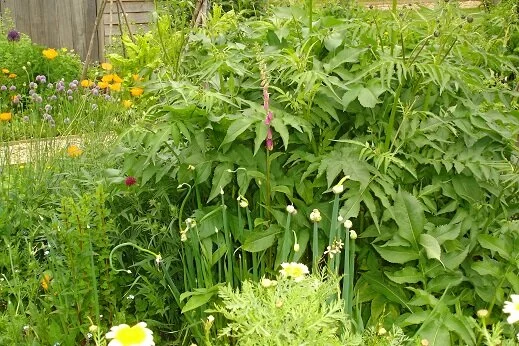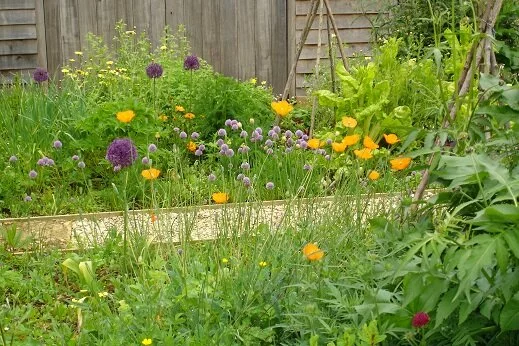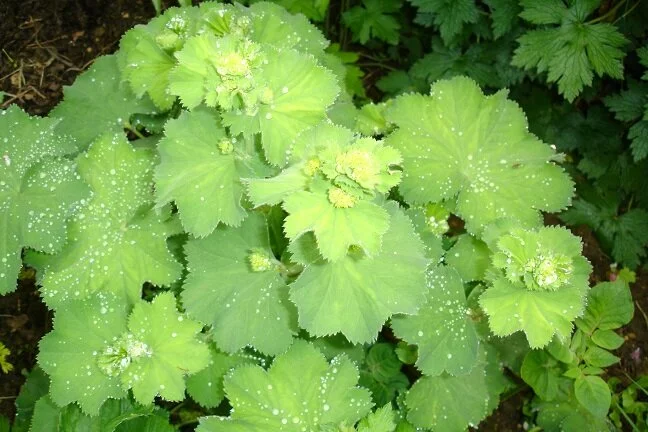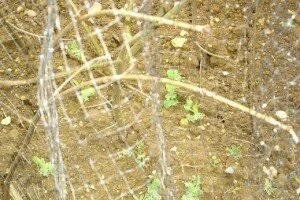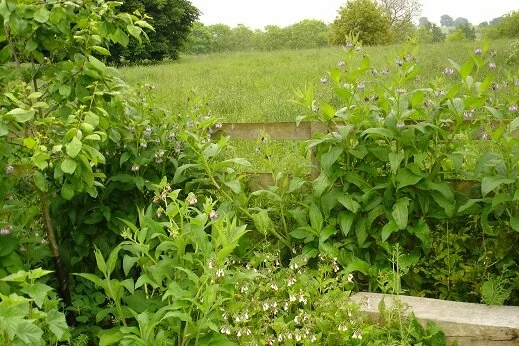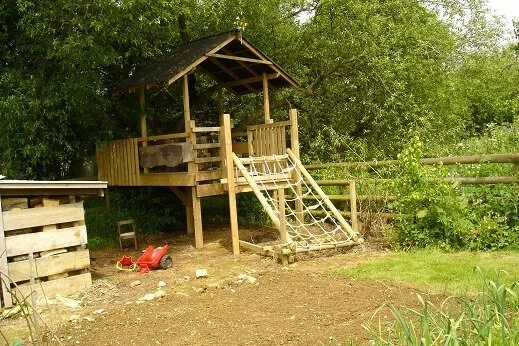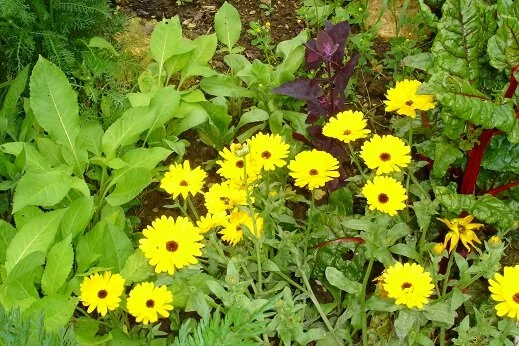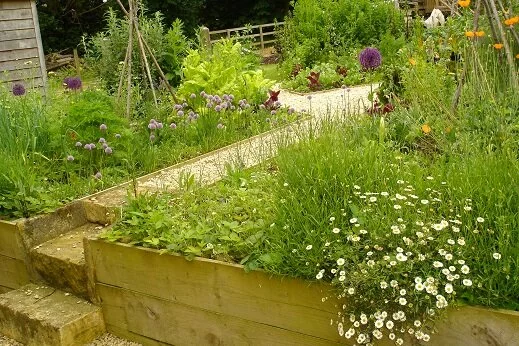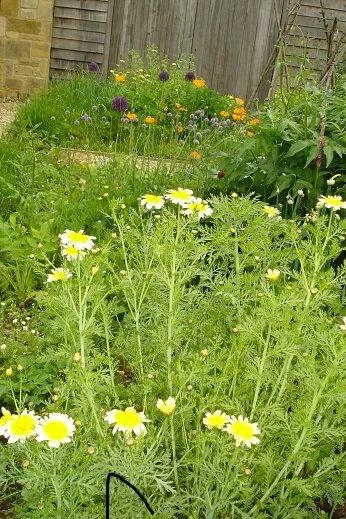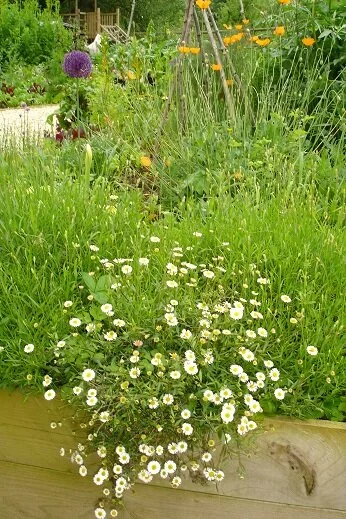While I love having a garden that I can pop out into to pick dinner from, really enjoy having space for children to play in and like it to look pretty, I have come to the conclusion that I’m never going to have a neat vegetable patch with orderly rows of prize onions, carrots and cabbage. And although I admire other people’s herbaceous borders, they’re not going to make an appearance here.
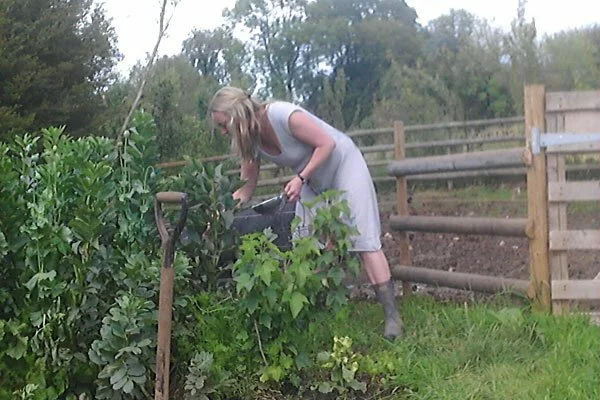
Much as I’m addicted to pottering around picking weeds for the pigs, gathering herbs for the kitchen and getting carried away dreaming up the meals that my edible garden is going to lead to, I obviously need to do other things too. And besides, I’m quite partial to a ‘natural’ look in the garden – chaos, others might call it.
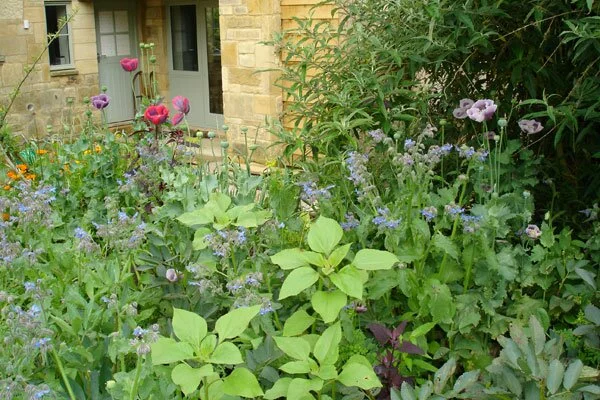
So I’ve got into the habit of making things easy yet appealing (to my eyes anyway!) in the following ways:
Natural gardening – Luckily I prefer lots of our small flowered native flowers to the more exotic blooms that need more attention. It makes sense to me to have lots of native British plants in the garden, whether self-seeded or planted by me. They tend to thrive easily, aren’t needy, and butterflies, bees and other wildlife like them too. The Natural History Museum has a great section on its website where you enter your postcode and are given a list of plants native to your area. Obviously some are weeds, but you’ll also find herbs, wildflowers and old cottage garden plants that will probably grow with virtually zero attention in your garden.
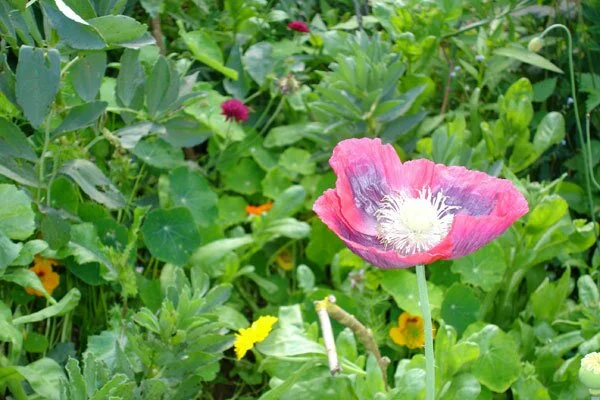
Flowers and vegetables – Companion planting such as growing borage and calendula near beans to encourage bees and nasturtiums near brassicas to deter cabbage whites is also great for covering the bare earth. I can’t see why you would have long rows of vegetables with bare earth between that constantly needs hoeing when you can plant blocks of veggies with pretty flowers around them. Having bare earth covered saves on weeding, acts as a living mulch and looks great. Okay so my calendula have now seeded everywhere and I’m not the most ruthless person when it comes to pulling them up. I have to admit that in some areas they’re smothering my borlotti beans, while the garlic’s getting a raw deal. But we have plenty to eat from the garden at the moment so I’m happy to sacrifice a bit of productivity (I’m sure I benefit from the bees elsewhere) for looks and ease. And the dark leaves of cavolo nero look so dramatic emerging from a mass of calendula!
Competing with tenacious weeds – I’ve heard people complain that plants such as mint, borage, lemon balm and comfrey are ‘terrible for taking over the garden’ and decided that as I love having plenty of lemon balm and mint for tea (especially the Moroccan variety of mint) and tabbouleh, am partial to ice cubes made with borage flowers for elderflower cordial or pimms and have become very appreciative of the nutrients in comfrey for feeding the garden, I’ll take the risk. In fact in some areas I really want plants like these that will give the weeds a run for their money. One side of our back garden borders a lovely old meadow and much as I adore looking over at the rampant cow parsley in early summer, the docks and nettles that are constantly making their way through are pesky. So I’ve planted comfrey, borage and mint right up against the fence. And variegated lemon balm to spread prettily in some of the weed prone areas around the raspeberries. If the comfrey starts to encroach too much on areas of the garden that are destined for other things, I happily fill up a wheelbarrow with surplus plants and either use them as a mulch around veggies that are just getting established or add it to the compost heap.
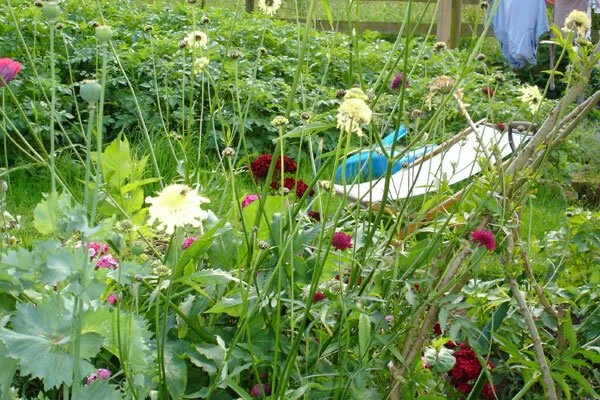
Hardy perennials – I’m a big fan of flowers that come up year after year and look beautiful with next to no attention. But I’m gradually finding more vegetables that fit into this easy but productive but easy category too. Jerusalem artichokes seem to grow anywhere and are great in soups in the Autumn or winter, they’re always a great vegetable for patches of ground where not much else will grow. I’m looking forward to planting an asparagus patch next year. And Egyptian walking onions are a recent perennial veg discovery for me. They look majestic with their tall, sturdy stems and spikes of onions at the top, are great amongst flowers, but they have so many edible uses and seem particularly suited to lazy gardening. You can use the onions that grow on top as you would spring onions. Eventually they get top heavy, topple over and take care of replanting themselves. You can dig up the little onions in the ground in Autumn or maybe eat some, leaving others to grow.
Herbs – I love the fact that many of my favourite herbs for taste (thyme, lovage, sage, rosemary, oregano, sorrel) not only look great but grow so easily. Thyme, rosemary and oregano even love rubbish soil, so you need zero effort in improving the area they’re planted in. Lovage grows gigantic each year and you only need a leaf or two to add a celery flavour to dishes. And if you have a few perennial herbs in the garden there are always salads to be picked. Even in the winter/early spring, if I haven’t got round to planting cut-and-come again salad leaves (another lazy favourite) sorrel (particularly the buckler leaf variety), winter purslane, lemon thyme are great added to the baby leaves of any beetroot I haven’t got round to pulling up, for a quick salad.
At the moment, despite lots of things being drowned by the rain, I love the rampant look of my garden. A lime green band of chard edges the sugarsnap peas but the order is interrupted by a few rogue calendula. Self-seeded plants are going crazy – some in a slightly planned way such as the dill and vivid blue cornflowers that look so pretty together and smell wonderful when I walk near them to pick broad beans. Orange and yellow calendula, red orach (the leaves are great in salads), borage and poppies have arranged themselves nicely in one corner. And although I had to put my foot down when too many poppies self-seeded around the raspberries (I’m determined to enjoy lots of raspberries this year and don’t want too much competition for nutrients around them), I’m very happy with the lovely magenta and lilac coloured ones that have landed accidentally but beautifully near the hollyhocks and nepeta.
When the pigs are bacon and I plant more of the back garden, there will definitely be an easy mass of wildflowers amongst fruit trees. And I’m already thinking of some beds for more perennial veggies. I would like to add a little order to the chaos with edging of some step-over pears and apples and rows of Sweet William or other flowers for cutting around the veggies. And I’d like to plant a rainbow bed with Ruby (each curve of the rainbow planted with seeds of pretty flowers of the right colour). But I’ll do my best to ensure my planting doesn’t need labouring over all weekend. Pretty and edible would be great but time to play hide and seek in it is essential. And some decadent time to lounge in a hammock between the trees would be nice.


